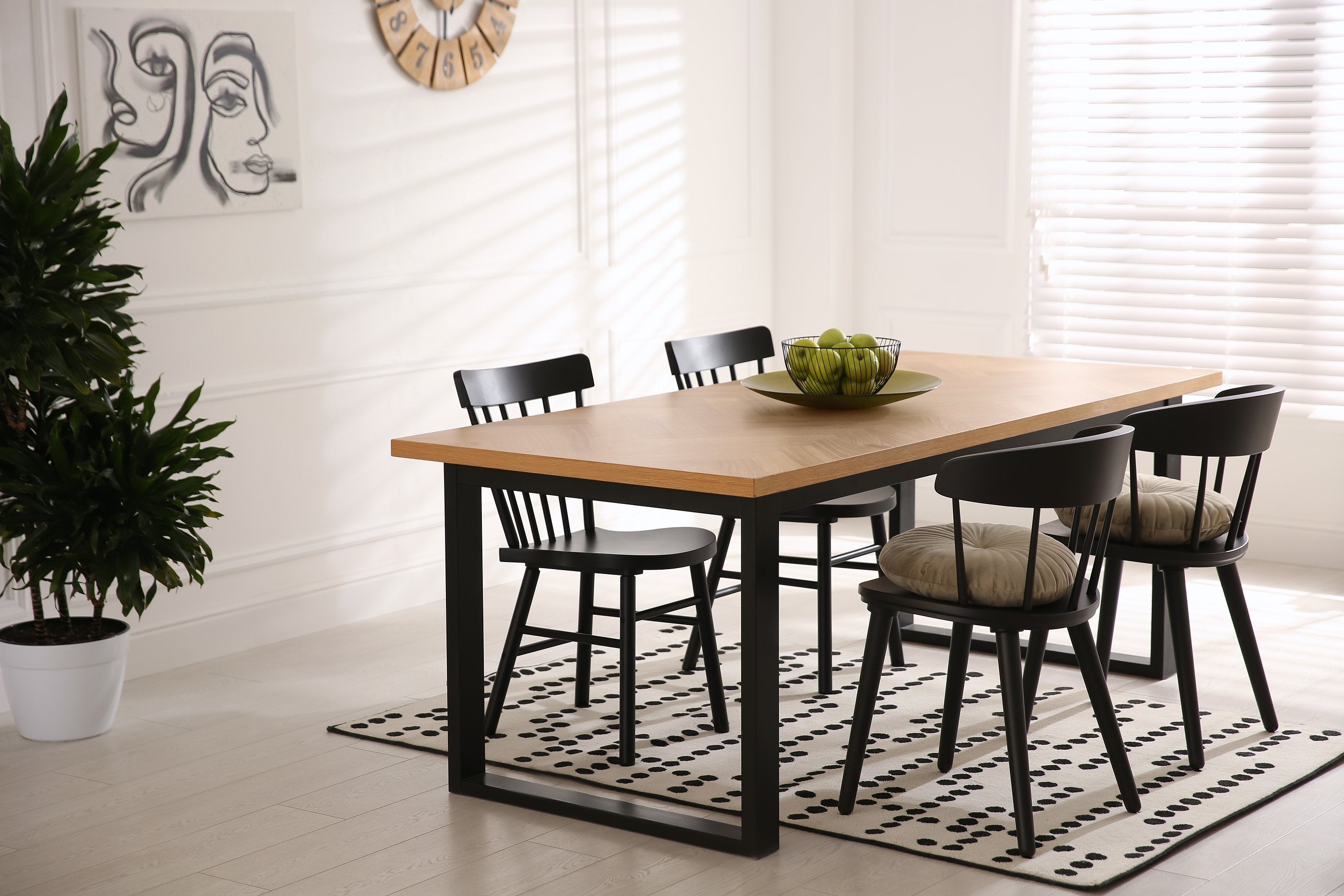Types of Rugs for your Dining Room – Rugs Direct
The dining room is where you entertain guests and spend valuable family time, but what shape, material or pattern of rug best suits all these occasions? Finding a dining room rug that’s both stylish and practical has long been a challenge, but they’re out, trust us.
In this article, we’ll ensure you understand which rug material to go for, what size will fit the shape of your room and how it can add style.

Rug should fit naturally in your dining room
It’s often said that choosing a rug before decorating is best practice. In most cases this could work, but what happens if you already love the current décor and furnishings in your dining room?
You may have a preferred colour or a rug pattern in mind, but make sure it will fit with the style and décor of your dining room. Whether it’s the pattern, design or colour, the style of rug needs to be in keeping with the room and should ultimately add to it.
For instance, dark red walls and a mahogany table would ideally fit with dark tones on an area rug. The centre piece of the room is generally the dining room table so framing it with an area rug, but not going overboard on bright colours, would subtly highlight its features.
And once you’ve purchased a rug, you shouldn’t have to rearrange your dining room to make sure it fits. By thoroughly mapping out your room beforehand and understanding which rug will complement the space, your new rug will seamlessly fit straight into your plans.
Think about rug longevity
There are multiple rug fabrics and materials to choose from and each with their own unique function. In the case of a dining room rug, it needs to be tough and durable yet still add style to the room.
We suggest that short-pile or flat weave rugs are the ideal dining rug choice. Shag rugs and other thick, fluffy types are extremely comfortable, but in high foot-traffic areas they will invariably be worn down. Not only do short-pile and flat weave rugs have good longevity but they prevent your chairs from jarring against the material.
Natural fibre rugs such as wool and cotton are the easiest to clean when it comes to stain removal, but make sure to avoid any synthetic fibre blends as they tend to trap dirt. Depending on the style or design you’d like, indoor-outdoor rugs are a durable and stain-resistant option that can be easily scrubbed.
Finally, if you’re going for the ‘something different’ style in your dining room then why not try carpet tiles? These interlocking squares are generally used as a carpet alternative but can work as an interesting and practical dining room rug. They come in various patterns, textures and hues to match any décor, while each square can be removed to clean or be replaced if the stain is not washable.
Avoid light colours
This is common sense really, but when choosing a colour for your rug, think about stains. Light hues, whether white, a light grey or beige are too exposed to stains so you can’t relax around the dining room table – especially if you’re the host of a dinner party!
And rug colours aren’t just there to cover up stains. They can blend the room together or be used as a striking centrepiece. Add your personality to your dining room with a geometric patterned rug or even have a bright single colour to add atmosphere.
Always go too big
It’s common for dining room rugs to frame the dining room table, but how much extra space around the table do you need to allow for? As a general rule of thumb, allowing 20-30 inches (50-75cm) around the table will give guests enough space to pull out their chairs without snagging on the rug.
If you have a large dining room, you may want to extend the rug even further to limit exposed areas. For a smaller dining room, an area rug used under the table may have to be reconsidered if it ends up touching the walls – you don’t want a carpet. If this is the case, either avoid a rug completely or find space for a throw or runner rug alongside the table.
Matching rug shape to room/table shape
When it comes to matching rugs with your room, it’s often easier to accurately match the shapes up – i.e. round rug for round room, a square rug for a square room. This appeals to the eye and is a seamless fit. However, there are exceptions.
A round dining room table looks excellent with a square rug in a square room; the table becomes the centrepiece. Whereas, if you have a square dining room table with a round rug in a square room, it would look quite jarring and not so pleasing to the eye.
Choose a low nap rug and an underlay
Using a rug that’s either a low nap or smooth is essential for stopping guests from catching their chairs on the rug. Indoor/outdoor rugs are a very apt option for this as they have a smooth, durable surface, while other natural fibre rugs work well too.
Another way to help the rug be as safe as possible is using an underlay (rug pad). The weight of the dining room table and chairs can damage the floor underneath the rug as the small bits of dirt scratch it. An underlay will prevent this from happening and also stop the rug from slipping at any point.